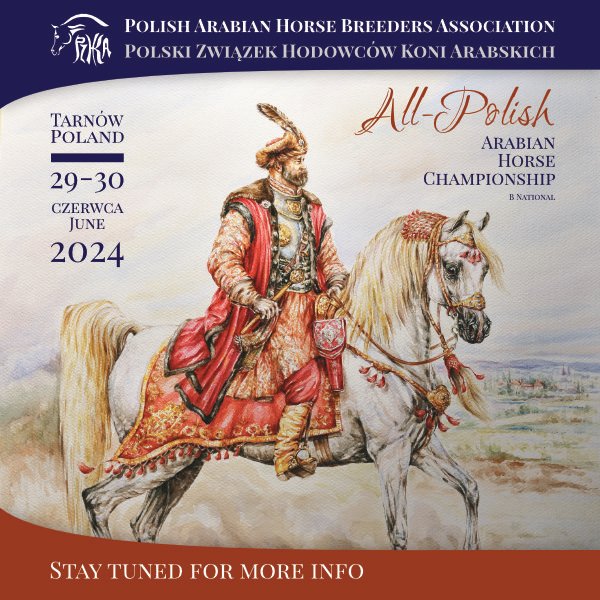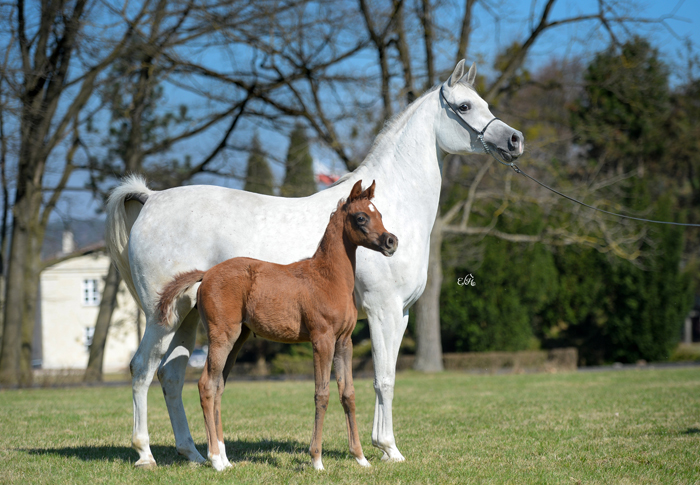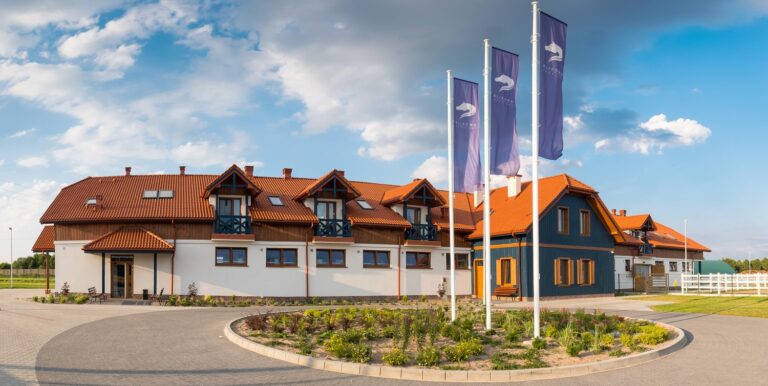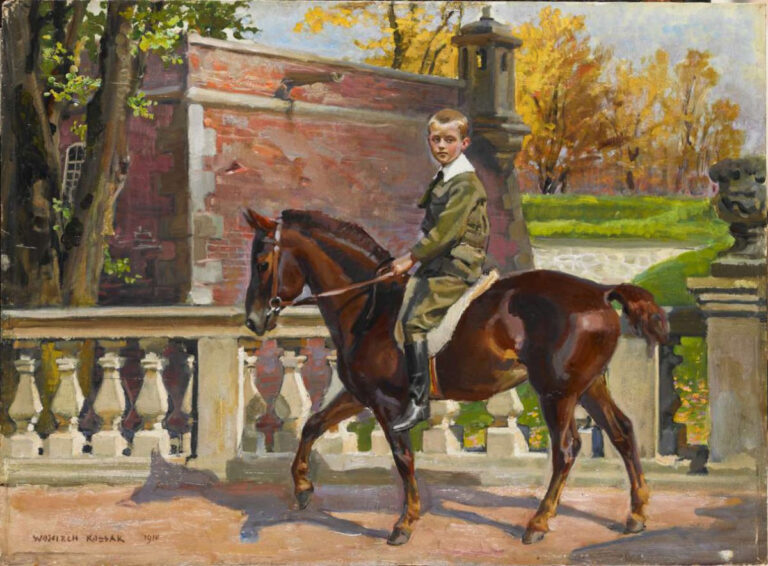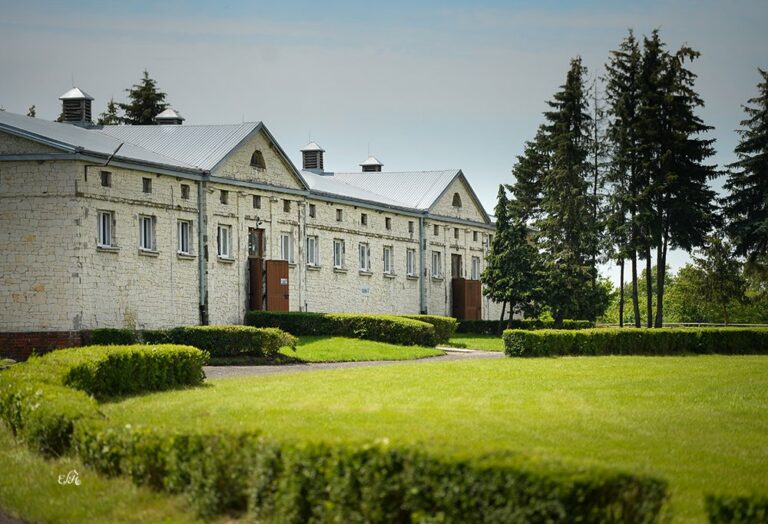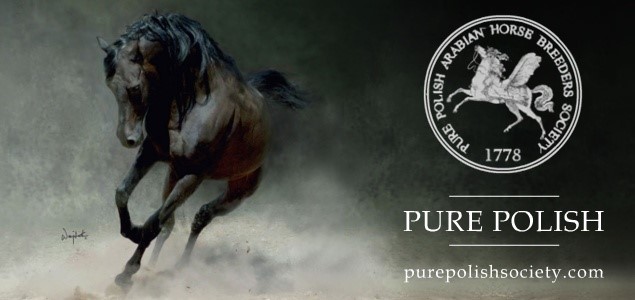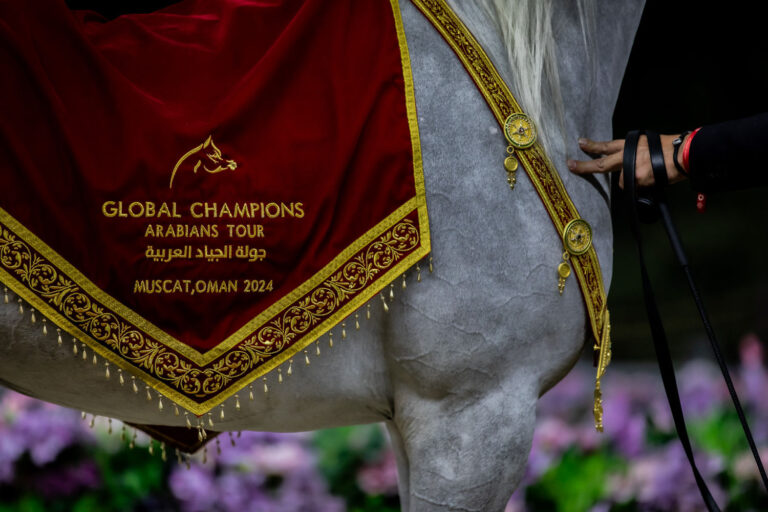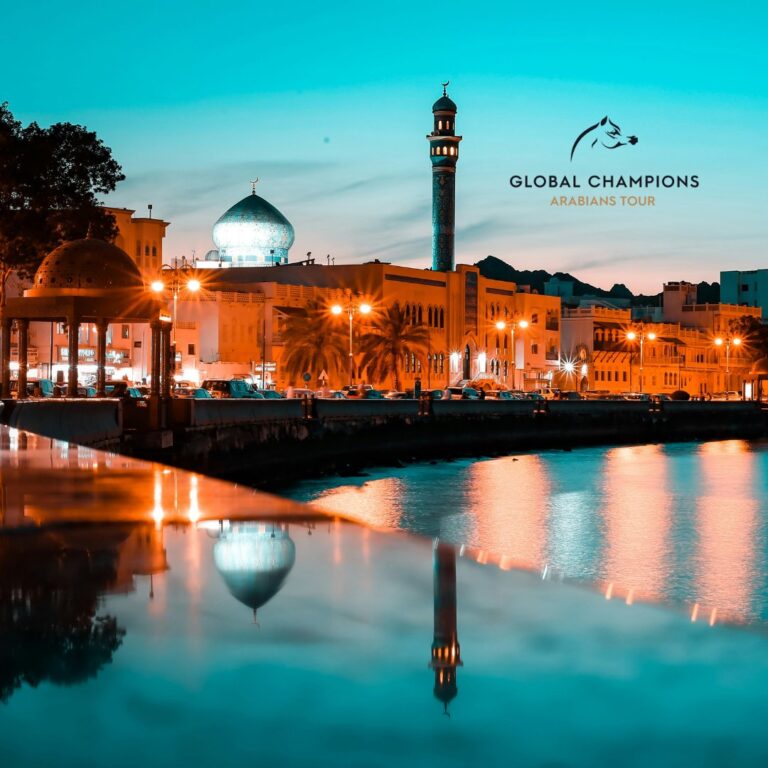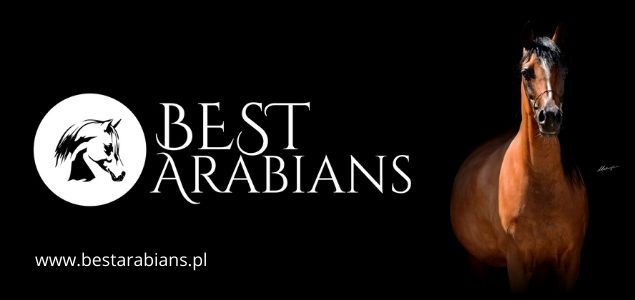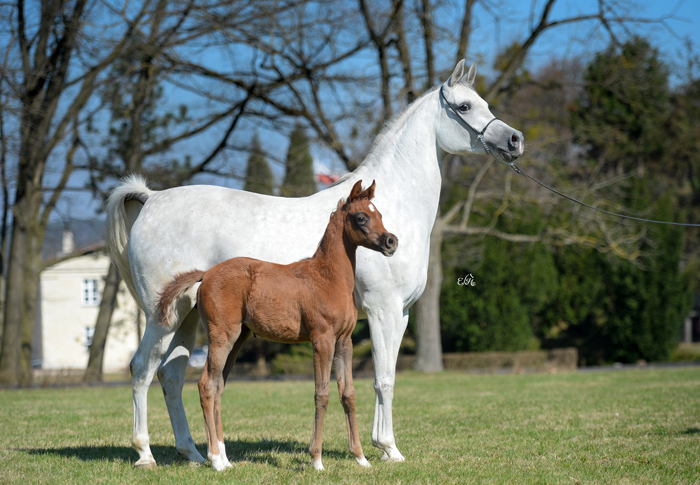
Early Spring appears seemingly calm at Białka Stud. All around is quiet, the birds are singing and the horses neigh from time to time. However when nature slowly comes to life and the sun starts getting warmer, the barns are already pulsating with new life. So far (the turn of March and April) the world has welcomed 13 foals – 4 colts and 9 fillies. “The most important moment of the year at the stud is the foaling period”, Renata Kurzyńska, the main horse breeding specialist, has no doubts. “You wait for this moment 11 months, each foaling is a hope that this will be the most awaited of all foals, the most wonderful one. Of course coverings are also important, but the foalings are most exciting.”
Dramatic history and vibrant life
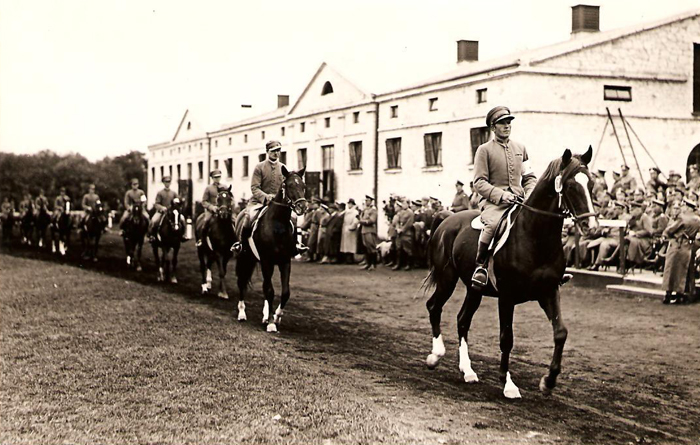
The everyday hustle and bustle intertwines with making plans for the future. In a years’ time, in 2018, Poland will be celebrating its 100th anniversary of regaining independence*. In that same time Białka Stud will be enjoying a “small”, but round anniversary – in 1928 the government of the Second Polish Republic made the decision to establish a Stallion Depot here. The “large” jubilee will be celebrated by Białka in three years’ time, in 2020, which will mark 90 years since the first horses arrived here. Either way you count, Białka has a long tradition, though Arabian horses came here only 35 years ago, so it is the youngest after Janów (which breeds Arabians since 1919) and Michałów (since 1953) Polish Arabian horse state stud.
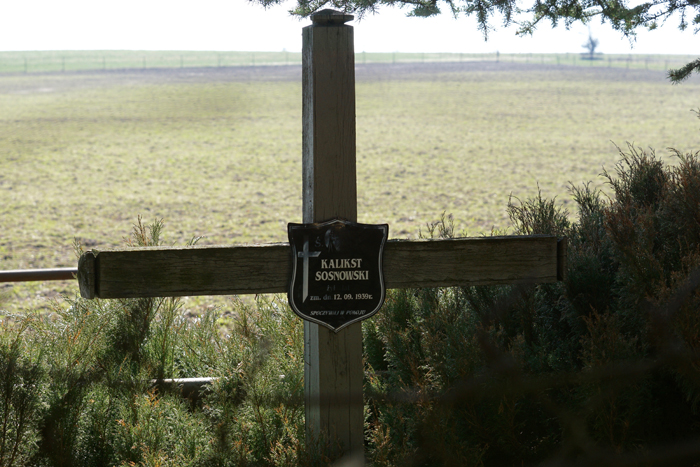
History did not spare Poland and Białka was no exception. The difficult times are remembered by today’s staff, who take care of the grave of Kalikst Sosnowski, hidden at the back of the depot. Sosnowski committed suicide in September of 1939 after the German army marched into Poland and upon receiving an order to evacuate east. He was buried in such a way so that he could have a full view of the stud – unfortunately later buildings obscured the grave and today few know this tragic, but romantic story about honor, love for the homeland and an act of desperation. Kalikst Sosnowski left a son, Adam**, who later rendered great services in organizing Arabian horse breeding in post-war Poland and was also the initiator of bringing Arabians to Białka.
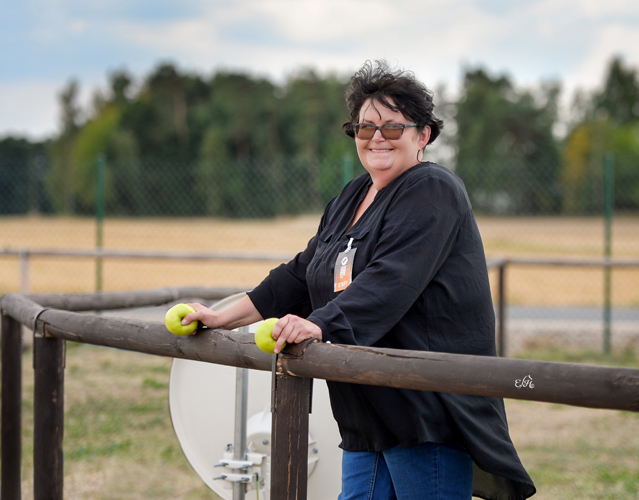
In 1982 29 mares arrived at Białka – 7 from Kurozwęki, 12 from Michałów and 10 from Janów – representing 11 damlines. Today’s headcount is about 125 Arabians at the stud and 33 Małopolska stallions in the Stallion Depot. They are all well known to Renata Kurzyńska, who this year celebrated her own anniversary: 20 years of work at Białka. “I came to Białka for a traineeship as part of my studies at the Agricultural Academy in Lublin. Later I was able to get a paid traineeship and since then I have sunk my teeth into Białka”, she says with a smile. Where did this determination come from? “I saw a passion for horses here. The depot was vibrant with life, I saw foals, mares, I wanted to be close to the breeding. This is much more than work, this is something that you can’t separate from your everyday life. This is something you live all the time”, she explains and it’s difficult not to believe when all around is an idyllic landscape and a great passion, which inclines people to devote themselves to it entirely.
Uniforms and order
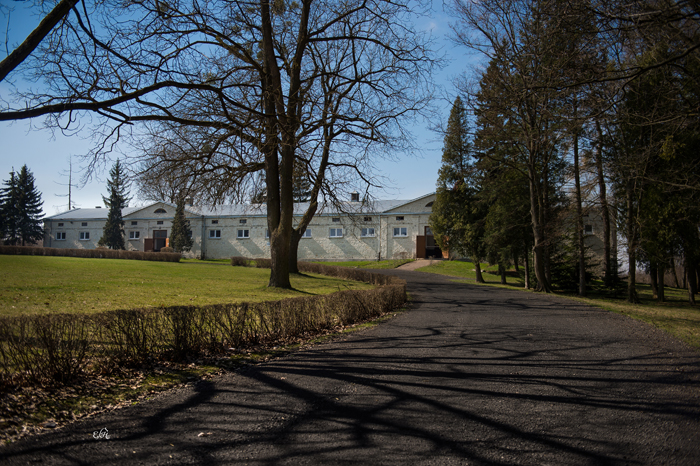
As a daughter of a professional soldier Renata Kurzyńska is used to a military drill. Uniforms worn during festivities by the stud staff by tradition are something natural for her. “I don’t know whether these uniforms follow me around all my life or whether I am following them”, she jokes. “I am the manager and give orders, that’s the way it is. My father did not train me, but this military drill has accompanied me nevertheless.”
There is order at the stud on an everyday basis, but there is also a new order. In 2012 Białka was incorporated into the structure of a large state enterprise, the Małopolska Hodowla Roślin (MHR – Małopolska Plant Production company). “The beginnings of the company date back to 1872”, explains its president, Bogdan Szumański. “Over the course of years the structure and name have changed many times. The reorganization definitely created new challenges for the company.
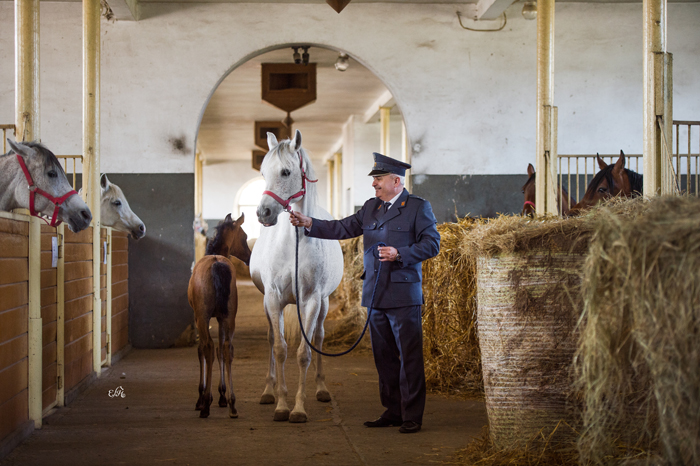
Arabian horses were a new reality for us, entering into a new circle of people. We hope that with each year Białka will be more visible not only in Poland, but internationally. The stud was definitely more visible last year, because we took on promotion activities on a larger scale. Arabian horse breeding for us is a loss-making activity. But we are supporting it because we know that it is connected with marketing benefits, due to the huge interest in Arabians worldwide. Our statute says that we should take care of elements important to Polish history, to Polish nature. The Arabian horse is such an important element.”
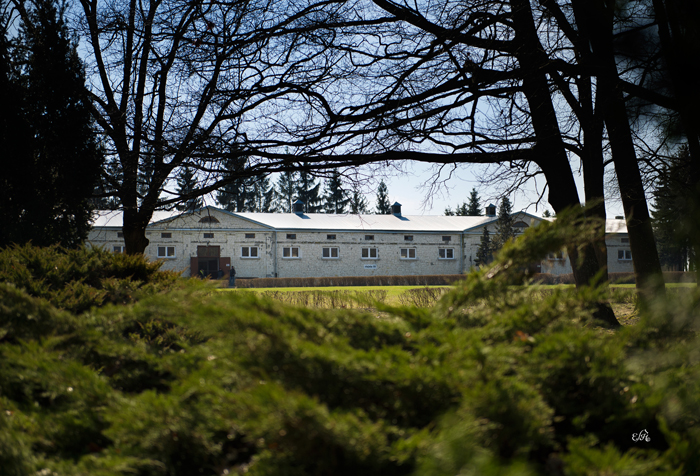
This is not the first job associated with horses for president Szumański. During 2006-2007 he was a member of the Supervisory Board of the Tarnów Regional Development Agency, a member of which was Klikowa Stud, known as the organizer of many events for Małopolska horses. The Klikowa herd was taken by Białka and today Klikowa is home to the “Klikowska Ostoja Polskich Koni” (Polish Horses Refuge) Foundation. “When comparing our herd to Janów and Michałów, our herd is the smallest”, notices Bogdan Szumański. “This results in a smaller income. But this year is a breakthrough year for Białka, we are preparing large changes, including the purchase of stands and modernizing the indoor arena so that the stud could hold more sport events promoting Białka. We are not thinking just about Arabians, but also of Małopolska horses – we are thinking of returning to organizing a National Championship for this Polish breed. We are also planning artistic events.”
The master’s eye makes the horse fat
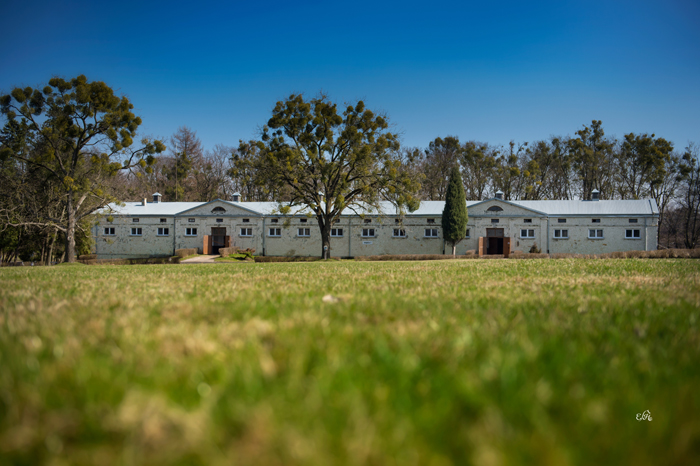
It is difficult not to see the potential in Białka. Beautiful lands, 450 hectares of fields, meadows and fish ponds. Together with park-like surroundings and eye-pleasing architecture. But of course, horses are the most important. They are the magnet. “Białka is the place where I am most present regarding my activities in MHR”, admits president Szumański. “Although we have production plants in 28 locations, mainly in southern but also northern Poland, I try to remember that the master’s eye makes the horse fat.” Does a manager of such an enterprise as Białka have to be a horseman? “When managing any kind of enterprise, be it a hospital, horse stud or nail and hardware factory, you have to know about finances, know the rules of the market”, says the president of MHR. “But just like in a hospital the manager can find support in specialists, doctors, nurses, paramedics, then in the stud we have veterinarians, zootechnicians, who have specific knowledge in their specialization and offer their expertise. The manager’s task is to select the right team and organize the work for the experts.”
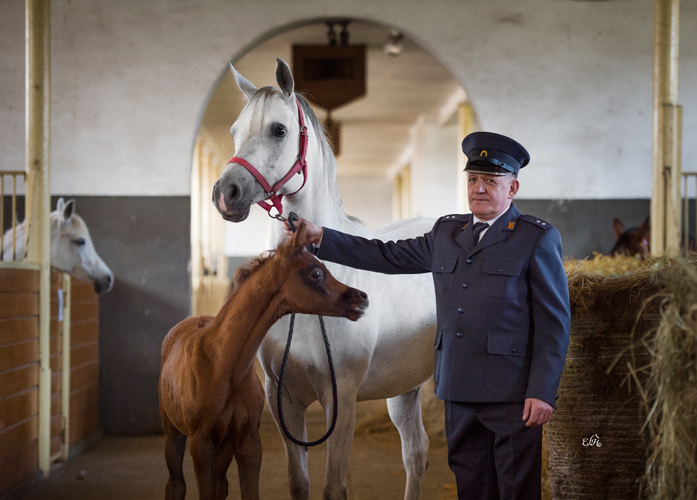
The depot’s director and member of the MHR Board is currently Lucjan Cichosz, a veterinarian by education. “I was born some twenty kilometers away from Białka, I used to spend time here as a boy”, he recalls. “Fate had it that after years of work as a veterinarian I found my way to MHR as a member of the board. I took on the responsibility for the depot and the stud, because it is closely connected to my profession.”
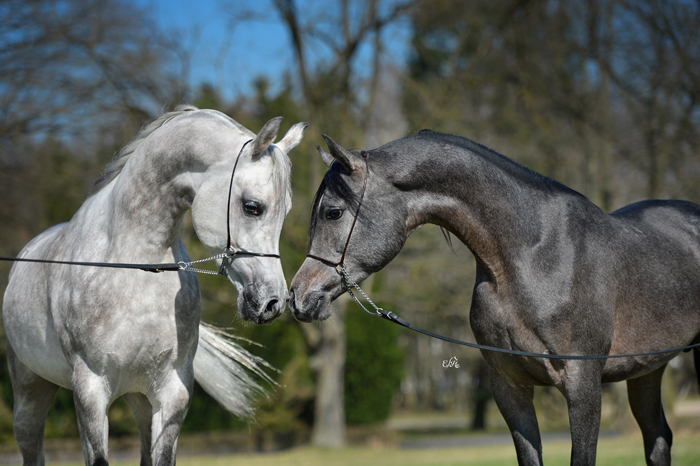
When writing about Białka it cannot be omitted that for years, as the “third” Arabian horse stud, it suffered major problems. There were rumors about privatizing Białka, the selection of stallions was random and successes were a thing of the past. Now things will be different. “There is no privatization of Białka in the works, the Stallion Depot is and will be part of the MHR company”, ensures president Szumański. And adds that although you don’t look a gift horse in the mouth, this is the end of using random sires: “We will be closely cooperating with Michałów and are choosing sires whose get have a greater chance at succeeding on the market. We are also planning on using horses from private owners. So this year holds higher costs for MHR – we are not using breedings to the cheapest stallions.”
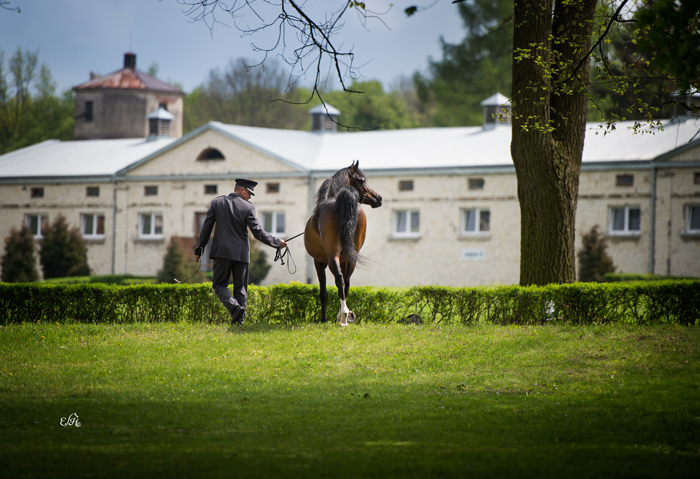
As Renata Kurzyńska says, this year Białka is using Michałów’s Medalion (QR Marc – Mata Hari/Werbum), leased for the entire 2017 season, on a wide scale. They also use Ekstern (Monogramm – Ernestyna/Piechur) and frozen semen of Emerald J (QR Marc – Emandoria/Gazal Al Shaqab) and Parys K (WH Justice – Pocahontas/Borsalino K). The stud has also access to Equator (QR Marc – Ekliptyka/Ekstern). There are 15 young mares entering the herd, which is a huge unknown, but also a great chance. “I hope that the best matings are still ahead of us”, says the breeder. In the past Białka mares matched well with Esparto (Ekstern – Ekspozycja/Eukaliptus). “But the most interesting mares and very good dams were by Gazal Al Shaqab. That was a hit in the jackpot”, emphasizes Kurzyńska. “Out of our young stallions one of the most promising is Milian. Stallions are very much needed in Poland, we are eagerly awaiting a very good Polish stallion.”
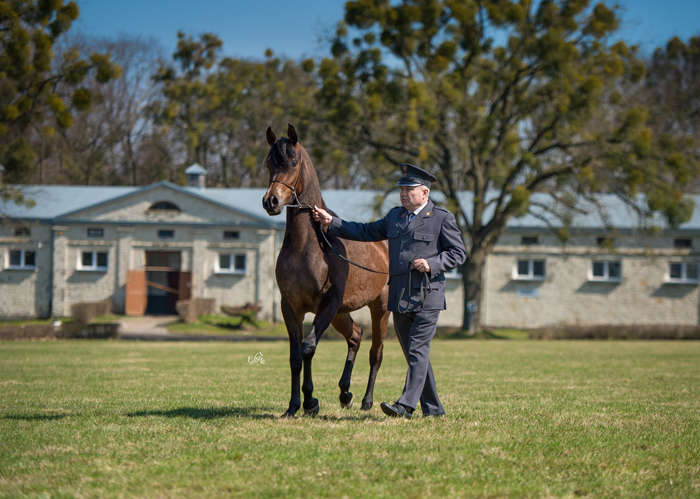
Asked about 5 elite mares present at Białka today, she mentions the junior multichampion Perfinka (Esparto – Perfirka/Gazal Al Shaqab), Euspira (Gazal Al Shaqab – Euskara/Ararat) – last year’s Polish National Senior Champion Mare, Permaria (Esparto – Perolia/Gazal Al Shaqab) and the youngsters: Celita (Lawrence El Gazal – Cella/Ekstern) and Elwita (Vitorio TO – Elwina/Enzo). Personally, her most beloved mare was Emika (Eldon – Emoza/Ernal). “She had something that made me attach to her immediately. When she was sold at the auction, I didn’t come to see her load on the truck, the emotions were too strong. I treat all of our horses’ performances very emotionally, because that’s what we breed them for, to cheer on their successes. I am very touched every single time”, she says.
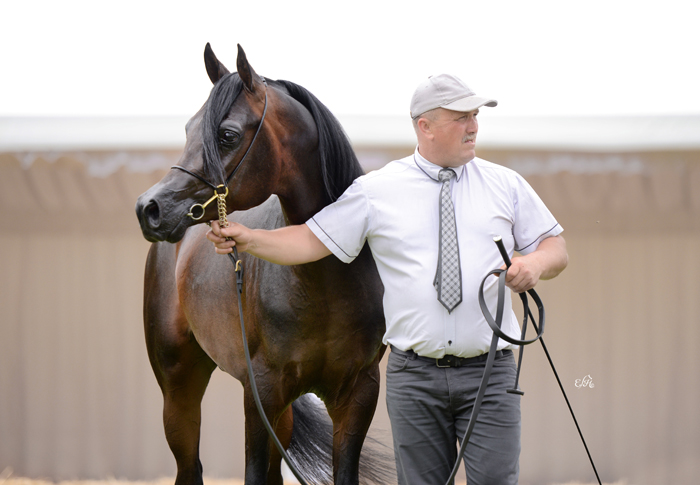
Her husband, Jacek Kurzyński, who has been working at Białka for 25 years and presents the stud’s horses at shows, likes working with stallions the best. “I was born in the nearby Krasnystaw. My grandfather was a groom at Białka, so was my uncle. There was a job opening and here I am”, he says. His best show memory? “My first title won at the Polish National Championships. It was a showing with Celsjusz in 2007”.
Ambassadors of the breed
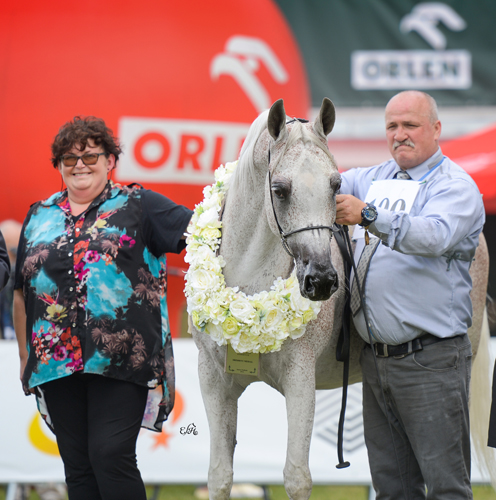
The success of Celsjusz (Ekstern – Carina/Pesal), who then became Polish National Junior Champion Stallion, is not the only accolade that Białka can boast. Shelves in the stud’s office are packed with trophies won by their graduates. To mention but a few: the 1993 All Nations Cup Reserve Championship and the 1997 Polish National Senior Championship for Pesal (Partner – Perforacja/Ernal), who until this day is a Białka classic and can boast a beautiful career as a chief sire; the earlier mentioned 2007 Polish National Senior Championship for Celsjusz; the 2015 Polish National Senior Championship for the masculine and phenomenal mover Cefir (Eryks – Celina/Metropolis NA), representing a unique, up to recently present only at Białka damline of Bent-El-Arab (this season Michałów introduced this line from Białka to their own herd); a bronze medal from the Polish National Junior Championships for the charming and friendly Celita; the 2012 Polish National Reserve Championship, as well as the 2013 European Reserve Championship and World Reserve Championship (under the banner of Al Muawd Stud, Saudi Arabia) for the graceful Perfinka; the 2016 Junior Spring Show Top Five for Milian (Lawrence El Gazal – Mila/Ararat), the 2016 Polish National Senior Reserve Championship for the flea bitten Euspira, a very maternal mare in an old classic Polish type, which still has many supporters.
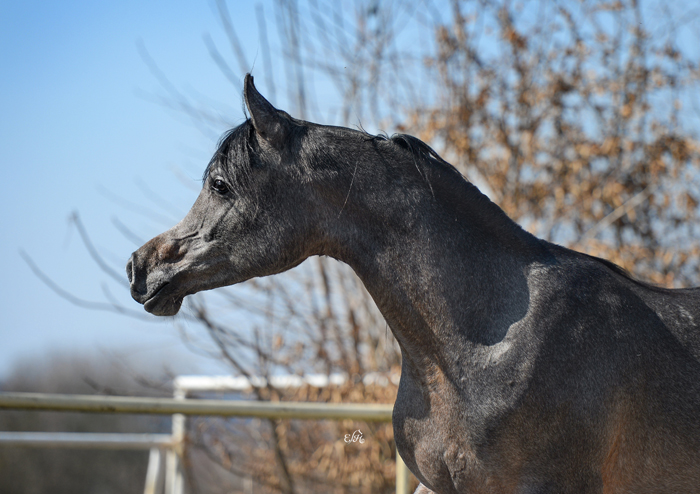
“This year we are training 4 yearlings for our championship, 2 two year old colts, 2 two year old fillies and 2 three year old fillies”, Renata Kurzyńska announced. “Among the senior horses we want to show Perfinka this season – the mare is not in foal, so we can train her. I hope for her good results, also abroad. She will be Białka’s ambassador.”
The mentioned Junior Arabian Horse Spring Show is the stud’s flagship event. During the first June weekend it draws young Arabian horses from all over Poland, from both state and private studs. The Białka championship, which two years ago received the B-National rank from ECAHO, has been enjoying great prestige for many years. “It is the first step in a horse’s show career. If a horse succeeds here, a chance for an international career opens up. That’s why the show enjoys such popularity. Last year 120 horses were entered, this year we are expecting a similar turn out”, predicted president Szumański. And he was right: eventually we saw 112 horses in the arena (124 were entered).
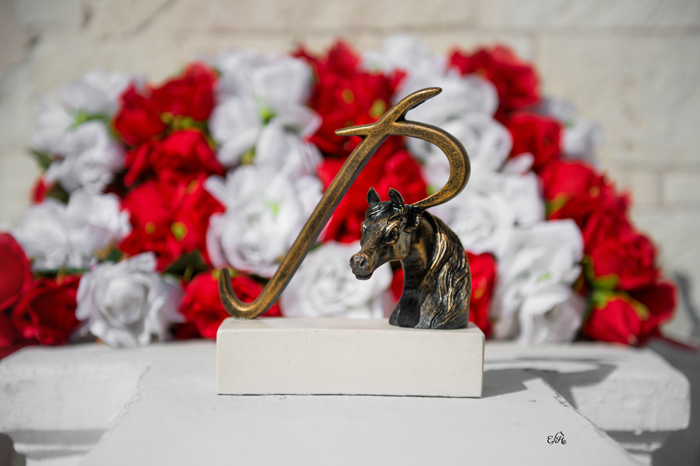
The championship took place on the 3rd-4th of June and it was judged by Christine Jamar (Belgium), Marc Veray (France), Gideon Reisel (the Netherlands) and Tomasz Tarczyński from Poland. Białka took Bronze Medal thanks to the performance of the yearling grandson of Perfirka, Piękny Pan (Glorius Apal – Parilla/Enzo), whose score in class was 91,83 points and whose name means Beautiful Mister. Another of the Białka contenders, the mentioned before Celita, first won the class of three year old fillies with an impressive score of 93,17 (including a “20” for type) and later placed fourth in the Top Five.
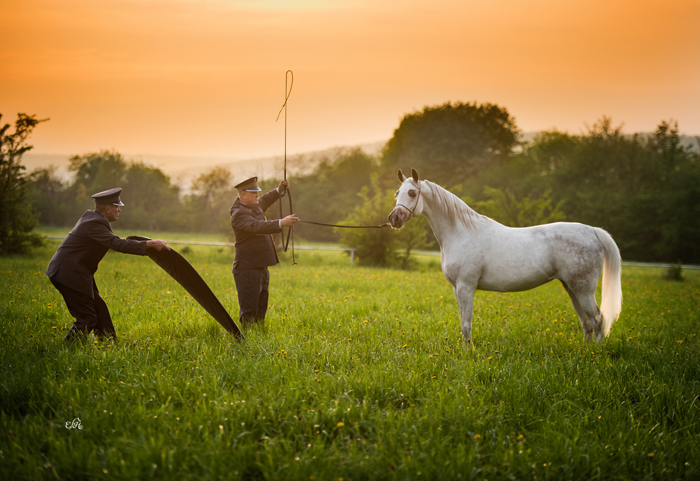
Białka is also getting ready for this year’s Pride of Poland Sale. The stud has entered 5 horses: 2 for the main sale and 3 for the Summer Sale. These are: Egita (Piaff – Egira/Emigrant), Eltika (Haytham Albadeia – Elatha/Pegasus), Emrisa (Lawrence El Gazal – Emrida/Ararat), Hulina (Fire Fighter – Hulala/Pamir) and Peluza (Fire Fighter – Perra/Ararat). “In previous years we sold several significant mares, this year we didn’t want to offer our most known stars”, stresses Kurzyńska. Indeed, not only wonderful mares have left the barns of Białka, but also the stallion Hun (Gazal Al Shaqab – Hula/Penthagonn), who is still remembered by the Białka staff as a stallion that had a chance to positively write himself down in Polish breeding. Hun was exported to the United States and today is a popular sire in Australia.

President Szumański is pleased with the results of Białka horses at the 2016 auction: “Last year’s auction was a satisfying one for Białka – five horses sold out of six offered. Also in the championships Białka presented itself very well, even better than we expected. The equine market is changing constantly – I often speak with foreign clients and even when these conversations are not purely equine it turns out that they can open new markets for Polish Arabians, even in such eastern countries as Kazakhstan, Azerbaijan. We are also observing an interest from Iran.”
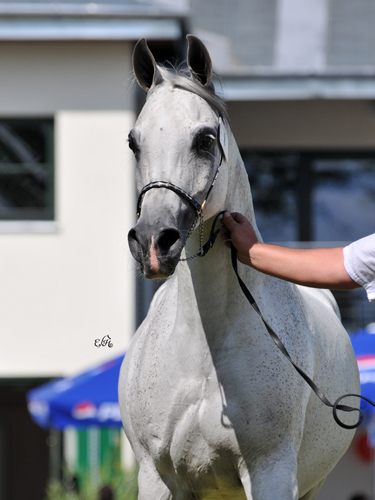
The highest prices achieved by Białka horses at the Janów Sales are 100 thousand euro for Ekina (Ekstern – Eklera/Ecaho) in 2008 (sold to Belgium); 120 thousand euro for Emika (Eldon – Emoza/Ernal), also exported to Belgium in 2009; 150 thousand euro for Fabryszka (Gazal Al Shaqab – Fula/Partner) in 2011 (she went to Saudi Arabia) and a record price for Perfirka (Gazal Al Shaqab – Perforacja/Ernal), which for 220 thousand euro was purchased by Cedar Ridge Arabians from USA. We should also mention the result of Hula (bred by Kurozwęki Stud), who was offered for sale in 2006 property of Białka and achieved 160 thousand euro from a buyer from Australia.
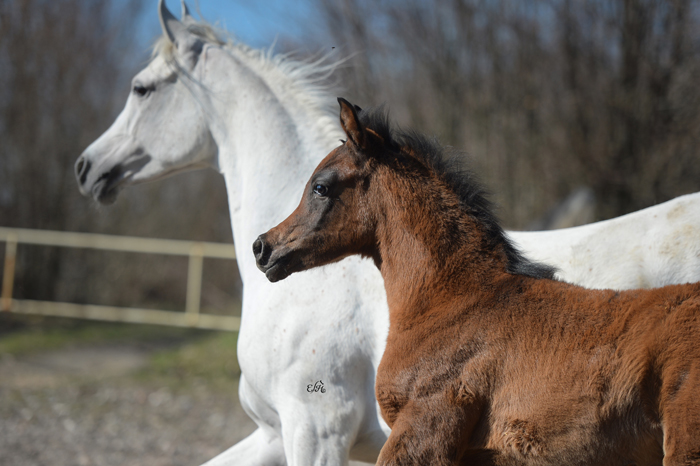
This year no one is counting on such records. “We are offering average Białka horses”, explains Renata Kurzyńska. “For me the best is Egita, but perhaps the youngsters will also catch the buyers’ eye. Arabian horses cannot be viewed in a stable. To understand what they are bred for, they must be seen in movement. No words are necessary then.”
“In a way last year was prosperous for Arabian horses: the media covered this matter very thoroughly and thanks to that more people began taking interest in Arabians. This interest translates somewhat to purchase decisions. We are already observing this, for instance during the monthly tenders. There are more buyers, more questions, more people are becoming aware that there are also other studs apart from Janów”, notices president Szumański.
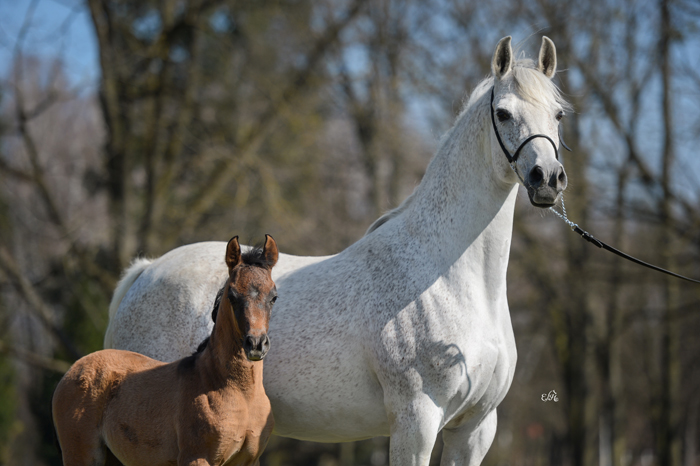
“Genetics do not like haste. But we can expect an improvement of the herd in 4-5 years”, sums up director Cichosz. “I would like to leave my mark here. I’m dreaming of breeding achievements that will leave a lasting influence.”
———————————————–
*1918 was the year of restoration of Poland’s sovereignty as the Second Polish Republic, after 123 years of partition by the Russian Empire, the Kingdom of Prussia and the Habsburg Empire.
**Adam Nałęcz-Sosnowski (1916-2003), a hippologist, outstanding expert on horses, many year inspector and breeding director of the North-Eastern region, later the Chief Head of state breeding in Poland.
Published on June, 26th
The article will be also published in the “Arabian Horse Spirit” magazine, No 4, 2017
Read more:
Carried away in Białka. The Junior Arabian Horse Spring Show 2017


